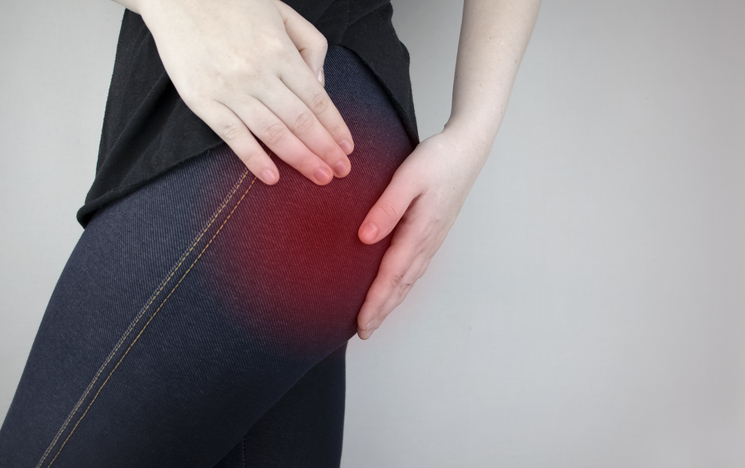Pain
What Is Piriformis Syndrome?

Piriformis syndrome is a rare neuromuscular disorder that is characterized by pain and discomfort in the buttocks that can extend to the hips and upper legs. It is the result of the piriformis muscle compressing the sciatic nerve. The piriformis muscle runs from the bottom of the spine, through the buttocks, and to the top of each thigh. It is responsible for stabilizing the hip, lifting and rotating the thighs, and performing motions of the hips and legs; including walking, balancing, running, lifting, shifting weight from one leg to the other, etc.
The sciatic nerve runs from the lower back, through the hip joint, into the buttock, and down each leg. The sciatic nerve travels alongside the piriformis muscle. The piriformis muscle can become irritated or spasm, which causes pressure to be placed on the sciatic nerve. This results in sciatica pain that may radiate from the lower back, through the buttocks, and down the front or back of the leg. Tingling or numbness may also be experienced in the affected area.
Symptoms
The pain caused by piriformis syndrome can range from mild to debilitating. Pain occurs in the buttocks, hip, or upper thigh. Other symptoms include, but are not limited to, the following:
- Aching, burning or shooting pain in the buttocks that extends down one or both legs
- Difficulty sitting comfortably
- Numbness, tingling or tenderness in the buttock area
- Pain that worsens when walking, climbing stairs, or sitting for long periods
- Reduced range of motion at the hip joint
Causes
Piriformis syndrome is caused by the piriformis muscle negatively impacting the sciatic nerve. Since the piriformis muscle is used daily, irritation or injury can easily occur. Common causes include, but are not limited to, the following:
- Inflammation
- Injuries, such as car accidents or falls
- Lifting heavy objects
- Muscle spasms
- Overuse
- Repetitive motions or leg movements
- Running
- Scarring in the muscle
- Sitting for extended periods
- Stair climbing
- Sudden twist of the hip
- Tight muscle
Risk factors
Although anyone can develop piriformis, certain risk factors can increase the likelihood. They include, but are not limited to, the following:
- Anatomical variation
- Athletes
- Participating in rigorous lower-body workouts
- Prolonged sitting, such as desk jobs or excessive inactivity
- Recent trauma
- Women tend to be more at risk than men.













